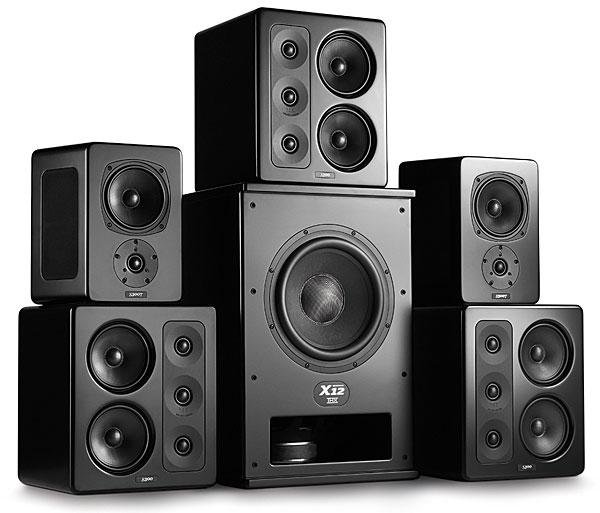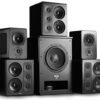What is an Extended Warranty?
An extended warranty is a service contract that provides additional coverage for an audio system beyond the traditional manufacturer’s warranty. While standard warranties typically cover defects in materials and workmanship for a limited time, often ranging from one to three years, extended warranties can extend this coverage, sometimes for several additional years. This additional period offers reassurance to consumers, helping to safeguard their investment in audio equipment.
In the context of audio systems, an extended warranty is especially useful due to the complexity and cost of these devices. These warranties can cover various components, including speakers, receivers, amplifiers, and other peripheral devices. When purchasing an extended warranty, it is vital to understand the specific inclusions and exclusions outlined in the policy, as this varies significantly between providers. Most often, extended warranties cover parts and involved labor, which can be crucial as repairs may incur high costs when out of warranty.
Moreover, the types of audio systems eligible for extended warranties can range from sophisticated home theater setups to portable and Bluetooth speakers. Whether one opts for a high-end audio system or more affordable equipment, consumers should consider the long-term benefits of extending their warranty. By doing so, they can potentially avoid unexpected repair costs and ensure continued access to quality audio performance.
Overall, understanding the nuances of an extended warranty is essential for consumers who wish to safeguard their audio systems. With the right policy, individuals can enjoy peace of mind, knowing that they are covered against potential failures and malfunctions that might arise after the original warranty expires.
Benefits of Investing in an Extended Warranty for Audio Systems
Investing in an extended warranty for audio systems offers numerous benefits that can significantly enhance the experience of owning high-quality sound equipment. Primarily, one of the key advantages is financial protection against costly repairs. Audio systems, especially high-end models, can be expensive to fix, and without a warranty, consumers may find themselves facing exorbitant repair bills. An extended warranty serves as a safeguard against unexpected mechanical failures, ensuring that repair costs do not become a financial burden.
Moreover, purchasing an extended warranty provides peace of mind for consumers. Knowing that your audio system is covered beyond the standard warranty period allows users to enjoy their investment without the anxiety of potential future breakdowns or issues. This reassurance can enhance the overall listening experience, allowing audiophiles to focus solely on the quality of sound rather than worrying about what might happen if a problem arises.
Another notable benefit of an extended warranty is the potential increase in the resale value of high-end audio equipment. Prospective buyers often seek assurance that the products they are investing in are protected. By having an extended warranty in place, sellers can present their audio systems as being well-maintained and covered, thus making them more appealing in the resale market. This additional coverage can translate into a higher selling price and can facilitate a quicker sale.
Extended warranties also often include coverage for accidental damages or issues that may arise after the standard warranty expires. This is particularly advantageous, as mishaps can happen, and traditional warranties typically do not cover such occurrences. Therefore, investing in an extended warranty becomes not just a financial decision but a smart strategy for maintaining the longevity and quality of your audio system.
What to Look for in an Extended Warranty
When selecting an extended warranty for your audio system, several key features warrant careful consideration to ensure you make an informed decision. First, examine the coverage limits being offered. Ideally, the warranty should cover both parts and labor, as well as provide a range of monetary limits that reflect the value of your audio system. Knowing the breakdown of what is covered will help you calculate potential out-of-pocket expenses in the event of a malfunction.
Next, assess the duration of the warranty. Extended warranties can vary significantly in terms of length, and understanding how long you will be protected is crucial. Some warranties may offer coverage for a few years, while others may extend for longer periods. Take into account your usage patterns and how long you expect to keep the audio equipment to determine the best option for your needs.
The list of covered components is another essential feature. Review what specific parts of the audio system are included in the warranty. With complex audio equipment, it is vital to ensure that all critical components, such as speakers, amplifiers, and receivers, are adequately covered. Remember that different warranties may have varying inclusions, so be sure to choose one that aligns with your system’s specific needs.
Additionally, consider the service options provided by the warranty. Some warranties offer in-home services, while others may require you to ship the equipment for repairs. Evaluate which option is more convenient for your lifestyle, as well as the associated costs that may arise during servicing. Finally, research the reputation of the warranty provider. A provider with positive reviews and a track record of reliability will help assure you that any future claims will be handled effectively.
To avoid any surprises, it is also essential to read the fine print of the warranty agreement. Pay particular attention to any exclusions or limitations that may influence your warranty coverage, as understanding these details will aid in navigating potential challenges down the line.
Cost Analysis: Is an Extended Warranty Worth It?
When evaluating the value of an extended warranty for your audio system, it is crucial to conduct a cost analysis that compares the upfront expenses of the warranty against potential repair costs for common issues. Extended warranties often range from $100 to $500, depending on the level of coverage and the price of the audio system itself. These warranties typically cover defects and failures after the manufacturer’s warranty expires, providing peace of mind for consumers. However, assessing whether the investment is worthwhile requires examining potential repair costs.
For instance, common issues with audio systems—such as speaker malfunctions, amplifier failures, or connectivity problems—may incur repair costs ranging from $50 to several hundred dollars, depending on the severity of the damage and the specific components involved. A study conducted by Consumer Reports found that the average repair cost for various audio components can exceed the price of an extended warranty, especially for premium systems, which can be more expensive to repair due to specialized parts and labor.
Additionally, it is essential to consider the likelihood of issues arising. According to experts, high-quality audio systems have a failure rate of approximately 10% within the warranty period, which drops to about 5% beyond that timeframe. Therefore, if you invest in an extended warranty for a system with a high reliability rating, the potential for needing repairs may be low.
Ultimately, weighing the costs against the benefits involves careful consideration of the specific audio system you own, its anticipated lifespan, and individual usage patterns. Consulting with knowledgeable sales representatives or audio system technicians can shed further light on the expected longevity and common issues associated with your brand or model. By gathering this information, you can make a more informed choice regarding the acquisition of an extended warranty tailored to your audio system.
Conclusion: Making an Informed Decision on Extended Warranties
As we have explored throughout this blog post, extended warranties for audio systems can present both benefits and drawbacks depending on various factors. When considering whether to purchase an extended warranty, it is essential for consumers to thoroughly assess their unique usage patterns, budget limitations, and comfort levels with risk regarding future repairs. An informed decision not only involves understanding the specifics of the warranty itself but also analyzing personal circumstances that might affect the need for additional coverage.
One critical factor to weigh is how frequently the audio system is used. For individuals who rely on their audio systems for professional purposes or daily leisure activities, an extended warranty may offer peace of mind. Conversely, for casual users who only enjoy music occasionally, the investment in extra coverage might not yield significant value. Similarly, understanding the potential costs associated with repairs can help illustrate the importance or redundancy of an extended warranty.
Budget considerations are also paramount. Assess whether the potential cost of repair services, especially for high-end audio systems, exceeds the expense of the warranty. This evaluation can make a substantial difference in determining financial viability. Moreover, consider the warranty terms, such as longevity and coverage specifics, as these details will directly influence the overall effectiveness of the warranty in providing reliable protection.
In conclusion, while extended warranties can mitigate concerns regarding repairs and maintenance, it is crucial to analyze the necessity of such protection carefully. By weighing the pros and cons and staying informed about personal usage needs, consumers can make decisions that align with their financial capabilities and lifestyle choices, ultimately enhancing their ownership experience of audio systems.
| Products Type | New, Old |
|---|---|
| Audio System Brand Name | 4uonly, 9 CORE, A CONNECT Z, ACARDO, Ahuja, AIElectro, Aiwa, AJ, ALTEC LANSING, AMMOK, AMYTEL, ANAND NIKHIL, ArtiClarity, artis, asgtrade, ASTOUND, ASTRUM, astTECS, ATARC, Avista, BAGATELLE, BALRAMA, Bashaam, BASS BLING, BAWALY, Bencley, BEPRO, BfsTeckt, BIC America, BIPL, BK Star, Black Bee, Blaupunkt, BLOOMBERG, Blue Denko, blutap, boAt, bogx, Borneo, Bose, Boult, bozeman, BRIGHT BHARAT, bs power, BTX9, BUFONA, BVEXO, Bxeno, Bydye, Callmate, carexo, Cellecor, Chaebol, Choomantar Shop, CIHLEX, CIHROX, CIHYARD, Clairbell, Classic, CLASSIC GOLD, Coracao, CORSECA, Cospex, CRATIX, CREATIVE, CrossBeats, Crovell, D1Y3, DADO, Daily Needs Shop, Daxstar, Deeshora, delphine, Deltech, DENON, DH Discovery, DHAN GRD, Divinext, DIVOOM, Docsir, Dosmix, Dotsun, DPM, DRR TS, DRUMSTONE, DRUMZZ, Ducncon, DULCET, Dyanora, Dyrt, Edifier, ekart traders, Elevea, ELIIDE, Elista, EMGA Delivering Innovation, ENMORA, Envent, ERD, ERHIndia, etmax, Everycom, F&D, Faux Rabit, FD1, FIKA, FINE, FINGERS, fire turtle, flix, FONACC, fonemart, Frontech, FRONY, FXI, G2L, GADGET STORE, Gadget Zone, Gadget-Wagon, GADGETSBULK, GALAXY, Gd Pro, GDS, Gizmore, Gk King Series, Glazier, Glx, GOOD FUN, GOVO, GUGGU, Harjio, HASRU, Hezoc, Highstairs, Honeywell, hr.enterprise, Hydra, HZR, I Kall, iball, IGADG, iGear, IMMEQA, IMMUTABLE, Imojo, IMPEX, Intex, INVICTO, JACKTRON, JANROCK, JAXTER, JB SUPAR, JBL, JBL Professional, Jeteck, JOKIN, JUST CORSECA, JVA, JVC, kc lite, keeva, KH, Khiesa, koylo, KRISONS, KSD, KVP, KVY, Landmark, LG, Lihu, liluns, LIMBRO, LIMEBERRY, LionBolt, Lipzie, livetone, Logitech, LOPAZ, LOUDSY, M-BELIVER, MAK POWER, Make Ur Wish, markif, Matata, ME&U, MECKWELL, Melowave, MITASHI, MOBONE, Modorwy, MONC, MOOZMOB, MOPANKH, MSNR, MUSIC WINDOWS, MUSICOOL, Musify, Muzen, MyKey, MZ, NEELTREDE, nefan, Neovud, NEUTON, Neuton pro, new eagle, New Indian Hosiery, NICK JONES, Nilesawar, Noble Skiodo, nunki trend, Offtrot, OG X NEXA WITH DEVICE, ONBIZ, Onix, Ortel, OSCAR, OSMAYO, OTAGO, otoobest, Ovista, Oxane, Ozlre, Palco, palco sound system, Panasonic, PANDA AUDIO, Pebble, Peoplelink, Pharaoh, PHILIPS, Philocaly Enterprise, Pick Ur Needs, Portronics, Powerlink, POZUB, prass, Prekrasna, Quaranel, QuikArt, QuillQuarry, quotimo, R25K, Raptas, RD, RECTITUDE, RENTOOR, RESA, RGMS, Rhobos, RHONNIUM, Rhytech, Ridge, ROAR, Rosario, Runixx, Rutashy, RZG, RZW, SACRO, Sagaft, Salvisa Collections, SAMSUNG, Samsurthi, Sanvi Traders, SAREGAMA, SCHOPFER, Seashot, SELL WISER, selloria, Sendily, Sendrata, shemaroo, shewon, Ship, Shivana, shree shivaye enterprise, SHREEJIIH, ShreeKrishna, shruthi, Sifaarish, SIGNATIZE, SK TONE, SKYSTER, Smartbeats, snowbudy, SOJUBA, SONICVIBE, Sonos, SONY, Soroo Future, Soundcore, SSVOCATIONPOINT, Stilvoll, Stybits, SUPERLIT, Suthar's, Swans, sykz, SYN SONS, Syvo, T-Series, Target, TECH-LOBBY, TECH2ROCK, TECHEL, TechKiyo, Techobucks, Techpunch, TechTailor, TECHXEWOO, TECNIA, Teksqr, TEQIR, TERABYTE, The HomeHut, Thomson, Tlismi, tnext, Tobo, Tonda, top winner, TOPLUS, TOWER TONE, TP TROOPS, Treadmill, TRONESLA, TRONICA, TrustShip, TULUA, TUNEO, Tunifi, TX -FLO, TXOR, Uborn, UIC, ultiads, Unibo, UnicornGlazz, UrbanRat, usu, Vacotta, VEKIN, Vemax, Vinayakart, Viraan, Virtual mart india, VitalWear, Vox, VVG TRADERS, WEEKND, Welbon, Whitecherry, Wifton, Wild Bull, WINGS, Wk Life, WON, WOOS, world voice, Worricow, wozaxo, WRADER, X4Decor, Xhimdun, XITARA, XVEP, YAROH, YKARN, Yoment, ZEBRONICS, Zebur, ZEPAD, ZETTTECH, Ziddjeet, Zinitax, Zionik, Zoook, ZOPHORUS, Zrose, ZSIV, ZTNY, ZWOLLEX, Zync |
| Audio System Cost | 16000 To 25000, 26000 To 35000, 36000 To 45000, 46000 To 55000, 5000 To 10000, 55000 To 75000 |
| Products Aging | 0 Y To 1 Year, 1 Y To 2 Years, 2 Y To 5 Years, 5 Y To 7 Years |
| Choose The Plan | Comprehensive Maintenance Contract, Labour Maintenance Contract |
| (EW) Validity | 1 Year, 2 Years, 3 Years |
Only logged in customers who have purchased this product may leave a review.



Reviews
There are no reviews yet.